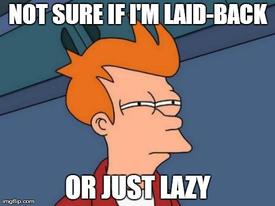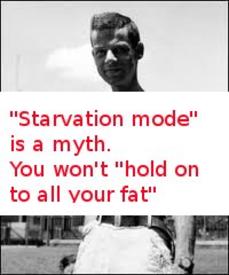Iron intake for men

Slacker16
Posts: 1,184 Member
I just wanted to point out something that has been bugging me a bit. One nutrient that is consistently low in my diet is iron, so I did a bit of digging around.
On nutritional labels, iron is given as a % of daily recommended intake. However, men (over 15 and under 50) need about half as much iron as women do (we're awesome like that). And it's not me saying it:
http://ods.od.nih.gov/factsheets/Iron-HealthProfessional/#h4
As far as I can tell, the intake % on labels is for women between the ages of 15 and 50, so men SHOULD aim for a 50% intake in iron (especially since too much of it can be bad for you).
On nutritional labels, iron is given as a % of daily recommended intake. However, men (over 15 and under 50) need about half as much iron as women do (we're awesome like that). And it's not me saying it:
http://ods.od.nih.gov/factsheets/Iron-HealthProfessional/#h4
As far as I can tell, the intake % on labels is for women between the ages of 15 and 50, so men SHOULD aim for a 50% intake in iron (especially since too much of it can be bad for you).
0
Replies
-
I don't track iron much as I eat a fair bit of meat, but I'd like to know if you have discovered something the MFP script has overlooked. Good question. I've always hated the percentages thing anyways. Just state everything in grams and milligrams please (perhaps with RDA% in parentheses). My request goes to the Canadian and American governments not necessarily MFP as I'm sure they are just following the industry standard.0
-
http://ods.od.nih.gov/factsheets/Iron-HealthProfessional/ has a table of recommended intakes for males and females, for reproductive age women the recommendation is indeed higher :
19 to 50 years 8 mg/day for men, 18 mg/day for women
Older (post reproductive) it becomes the same again.
Women are also allowed to be more anaemic.0 -
Right, but is MFP reflecting the differences the OP talked about?http://ods.od.nih.gov/factsheets/Iron-HealthProfessional/ has a table of recommended intakes for males and females, for reproductive age women the recommendation is indeed higher :
19 to 50 years 8 mg/day for men, 18 mg/day for women
Older (post reproductive) it becomes the same again.
Women are also allowed to be more anaemic.
Also, "allowed"? What do you mean?0 -
Also, "allowed"? What do you mean?
The accepted range for haemoglobin in women is lower than men.
They are allowed to be more anaemic without it being seen as a problem.0 -
The problem is not with MFP, it's with nutritional labeling. If you look on the nutrition data of any food, iron is given as % of daily value. MFP only reflects that.Right, but is MFP reflecting the differences the OP talked about?
However, if you look at a website that provides both %DV and intake in mgs, you'll notice that the %DV is given out of 18mgs/day.
Example, 3.3mgs=18%:
http://nutritiondata.self.com/facts/poultry-products/667/2
Men need only half as much since most of us don't menstruate, and too much iron can be bad for your health.0 -
I've noticed I'm always short on iron, as well (I hardly eat meat). I have been taking vegetarian multivitamins and the recommended serving is 2 tabs which gives 18mg (I guess they assume mostly women are vegetarian) and that brings me to 100% on MFP as well. I guess men could adjust the iron goal in MFP if they do track it....0
This discussion has been closed.
Categories
- All Categories
- 1.4M Health, Wellness and Goals
- 398.5K Introduce Yourself
- 44.7K Getting Started
- 261K Health and Weight Loss
- 176.4K Food and Nutrition
- 47.7K Recipes
- 233K Fitness and Exercise
- 462 Sleep, Mindfulness and Overall Wellness
- 6.5K Goal: Maintaining Weight
- 8.7K Goal: Gaining Weight and Body Building
- 153.5K Motivation and Support
- 8.4K Challenges
- 1.4K Debate Club
- 96.5K Chit-Chat
- 2.6K Fun and Games
- 4.8K MyFitnessPal Information
- 18 News and Announcements
- 21 MyFitnessPal Academy
- 1.5K Feature Suggestions and Ideas
- 3.2K MyFitnessPal Tech Support Questions


